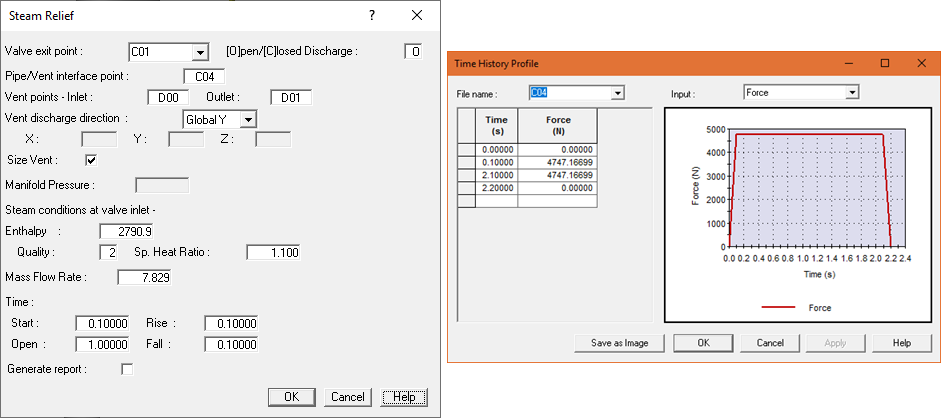Modal analysis is a technique of dynamic analysis of structures. Its objective is the estimation of dynamic properties such as frequencies and natural modes during free vibration as well as damping. AutoPIPE adds nodes to distribute mass and applies Finite Element techniques to accurately calculate natural modes of vibration and associated mass.
The modal analysis is the basis of Auto PIPE the other dynamic analyses: Response Spectrum, Time History or Harmonic Analysis.
During the audits carried out by the NUPIC and by the nuclear clients, it has been verified that the vibration modes and the mass distribution of the AutoPIPE is very precise and therefore it has always passed the verifications against more than 100 dynamic benchmarks.

AutoPIPE can apply up to 50 seismic response spectra or 10 force spectra to a piping model. The response spectrum analyses that can be performed with AutoPIPE are:
EIn case the piping system is supported by two or more structures, an analysis with the seismic anchor motion (SAM) must be additionally performed and combined with the multiple spectrum analysis.
The SAM is a static analysis based on the deformations caused by the movement of the supports. It is very important to do it whenever the pipes are supported since the structures will have different natural modes of vibration and therefore will move in a non-solidarity way.
AutoPIPE puede calcular en una única ejecución varios casos por Time History, como:
AutoPIPE integrates a Fluid Transients calculator that generates force profiles for integration by Time History. This generator is very useful for rapid valve closure phenomena, such as the tripping of a turbine, the closure of a HIPPS system, or any system where a block valve quickly closes the pipe.
AutoPIPE integrates the ASME B31.1 formulas and prepares the force profile for the valve and discharge. Forces in discharge pipe direction changes, whether open or closed discharge, can be calculated using AutoPIPE's fluid transient calculation.
These histograms are integrated using the Time History analysis method.

AutoPIPE can apply up to 10 Harmonic loads in a calculation. These loads can be:
Harmonic loads can be generated by:
The AutoPIPE has a bi-directional interface with the Bentley PULS program that performs the acoustic calculation of piping systems, including reciprocating compressors and exports the harmonic forces to AutoPIPE.